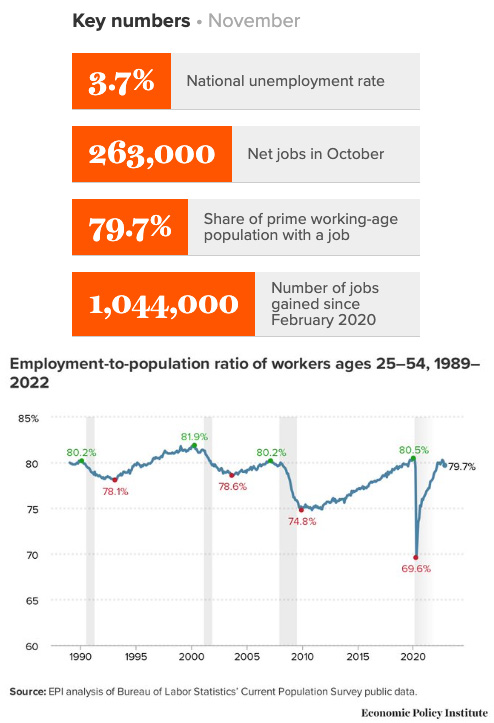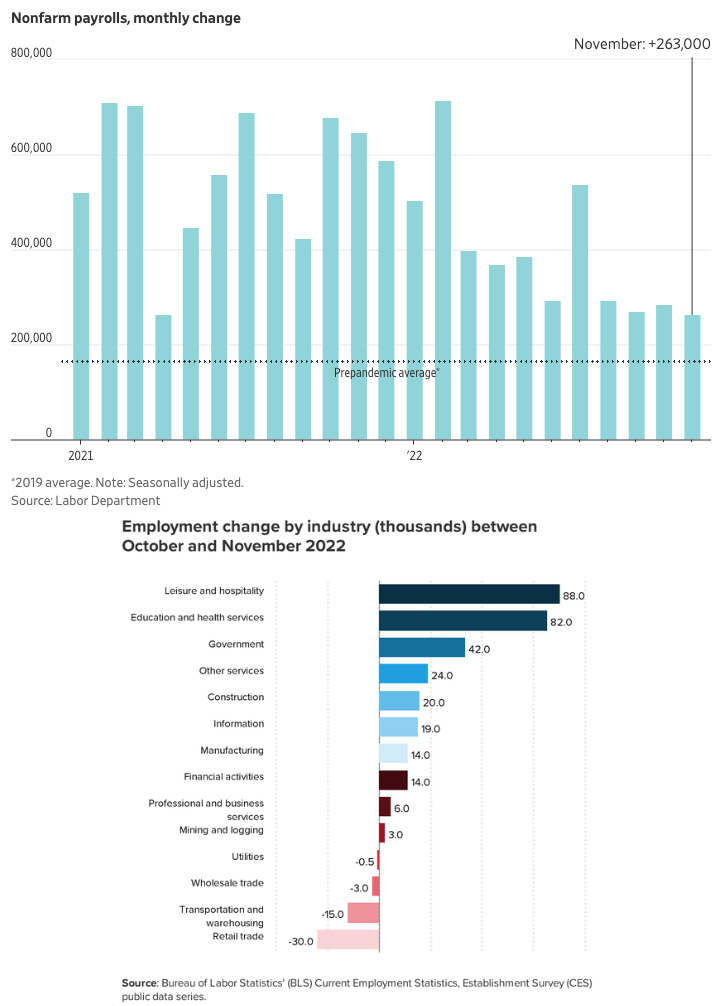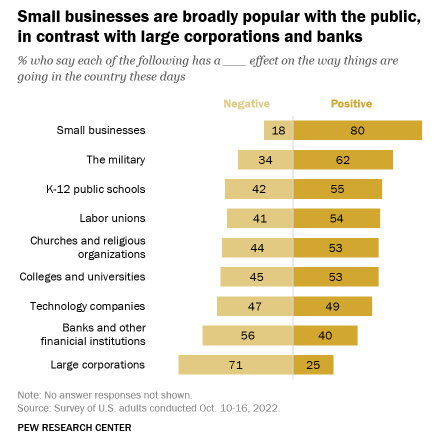Economic Update: December 2022
Change State Friends,
Things are slowing down as the year comes to a close and we take time to reflect on the successes of the past 12 months and the opportunities ahead in 2023. We will be closed for the final week of the year to spend time with friends and family, and hope that you all are taking time to rest and recharge as well.
Please find below your economic update for December. Happy Holidays and a bright and joyous new year to you all!

Economic Snapshot
November’s jobs report was a tale of two conflicting datasets: the payroll (employer) and household surveys. The Bureau of Labor Statistics reported that the American economy added 263,000 jobs in the month of November, and the unemployment rate remained close to a historic low mark at 3.7%. On the other hand, data from the household survey is beginning to reveal signs of weakness in the labor market. While unemployment remains low, the labor force participation rate (LFPR) and employment have shown steady decline for the last 2-4 months. When the two surveys conflict for several months in a row, it might be a sign of a coming inflection point in the labor market.
Some good news – much of last month’s top growth came in the sectors that were dealt the biggest blow in the pandemic. Leisure and hospitality added 88,000 jobs, healthcare added 45,000 jobs, and the social assistance sector that provides services critical to working families is now fully recovered from COVID-19 losses. Exactly how much longer will the job market remain this strong? We’ve seen a spate of high-profile corporate layoffs these past couple of months, and amidst ever higher interest rates – the most recent hike just last week to the highest level it’s been in 15 years – an impending softening of the labor market does seem likely.

The latest on the recession forecast? It’s still anyone’s guess but many remain optimistic that the economy is simply slowing rather than shrinking—and a soft landing to avoid recession is still within reach. Other economists paint a less rosy picture that the market may be in a lose-lose situation. Good economic news is not great for investors, as the Fed is working to cool down the economy. But bad economic news obviously raises the risk of a recession. With the LFPR in decline, it could continue to drive up wages as employers compete for a shrinking pool of talent, and in turn worsen inflation. Wage growth is good, but economists prefer it to rise on pace with the Fed’s 2% inflation target to avoid conditions where wages and prices rise ever higher in tandem. And as the Fed continues to raise interest rates into 2023 to tame inflation, it may trigger more layoffs and ultimately a recession. One thing is for sure, we are all closely monitoring hiring trends for any sign of shift in the momentum of the labor market. What outcome are you betting on?
(Sources: Economic Policy Institute, US Department of Labor, CNBC, The Wall Street Journal, CNN, The Washington Post, Forbes)
What else?

What else for December?
- Twitter commentary on the November jobs report from the EPI here and here.
- Republican, Democrat or Independent – a majority of Americans now feel that banks, financial institutions and large corporations have a negative impact on the way things are going in the nation. Strong support for small business also spans the political spectrum.
- The labor force participation rate has been unexpectedly declining for one very specific age group: middle aged men 35-44, and most prominently those without a 4 year degree. Some economists speculate that the disproportionate decline could be because this age group has suffered repeated economic crises that destabilized their connection to the job market: losing work in their early 20s in 2008, followed by finding themselves at risk again post-pandemic layoffs.
- As rail workers continue to voice their frustrations over a contract they feel did not do enough to address their quality of life concerns, take a deep dive into the 8 years of militant rank-and-file organizing that brought their plight to the national stage.
- Bad news for workers who’ve survived a year of burgeoning tech industry layoffs: those who remain may be subject to ever-higher performance standards, as employers begin to regain the upper hand after years of competing for talent.
- Explore new data on the gender imbalance in the workforce from LinkedIn’s Economic Graph.
(Sources: Economic Policy Institute, Pew Research Center, The New York Times, The Intercept, Business Insider, LinkedIn)
